Wearing mourning clothes are an ‘outward token that they loved those they lost.’ (Ladies’ Magazine and Literary Gazette, 1831, p. 117)
In the Victorian and Edwardian era, wearing mourning was a social obligation but it also helped to protect the feelings of the mourners: Every stranger would instantly recognize the mourning dress, know of their loss and wouldn’t hurt their feelings with unnecessary jaunty remarks.
The colors of Victorian mourning are black, white, gray, purple, lavender and scarlet. Black is the color most associated with mourning wear. However, not all extant black dresses are mourning dresses: Dresses trimmed with black crape are always mourning dresses, whereas black velvet and black lace dresses are generally not mourning dresses – ‘Neither velvet, satin, nor plush can be worn in mourning […] for they are not mourning materials’ (Collier’s Cyclopedia, 1901). Dresses with a combination of the colors gray, white and lilac – such as a gray and black dress, a white dress trimmed with black or lavender, or a gray and purple dress – often are mourning dresses. When black isn’t worn for mourning, the dress is usually worn with gold ornaments and colorful accessories: pink bonnet ties, a brightly colored shawl etc. (The Art of Dressing Well, 1870, p. 26)
The Victorians knew three stages of mourning: The first stage was called full, close or deep mourning. It was worn for the nearest relations: husband, parents, child and siblings. Usually, a dull black wool dress with a long black crape veil covering the face. Second mourning was worn for distant relatives or by those who have previously worn deep mourning. The usual dress was made of black silk, worn with a short black crape veil or without a veil. The third stage was called light or half mourning, and now colors were worn: such as lavender, gray and purple. Mourning was less strict for working men – and since the Edwardian era also for working women – whereas young men usually wore mourning as long as women did.
In England, mourning customs were very strict, whereas mourning customs in France, Germany and especially the US were less rigid: Mourning clothes could even be ‘dressy’ or ‘showy’. If you research mourning clothes for a special country, keep in mind that the following quotes are from the US, England, France and Germany. A suitable US mourning dress with black lace and jet beads might be to dressy for an English mourner and shock the society!
This part of my Victorian mourning series provides a general overview over mourning customs in the Victorian and Edwardian era. If you’d like to know more about mourning in a special decade, you’ll find links at the end of the article about mourning in the 1840s, 1850s, 1860s, 1900s and 1910s.
Why wearing Mourning?
‘The mourning habit is a sacred shield against that intrusive curiosity […] which would otherwise be urging their inquiries, why the countenance was sad; thus compelling the mourner to drag forth the secret and sacred mysteries of grief […] or to bury them beneath an assumed carelessness of manner […] The brother of Miss B. had been dead only “three little weeks” – but there are duties which make it indispensable she should go abroad. Mourning apparel is prohibited. She goes forth in the same dress she would have worn had her dear brother been the companion of her walk. She meets a friend just arrived in the city, and who consequently knows not her loss. His salutation is cordial and gay; but it is repelled by a sad and chilling expression of countenance in Miss B. She is shocked at his levity […] [he is] stung by her coldness or indifference […] Their feelings are mutually wounded; and their reflections are of unkindness, or neglect, or anger. Reverse the picture. Let the mournful apparel of Miss B. show that she has reason for her sadness. The friends meet. The tale of sorrow is told – is felt.’ (Ladies’ Magazine and Literary Gazette, 1831, p. 115)
The Three Stages of Mourning
‘There is no rule either for the depth of mourning, or the time when it may be laid aside’. ‘Some wear very close black for a long period, for a distant relative; whilst others will wear dress mourning for a short time in a case of death in the immediate family’. (The Ladies’ Book of Etiquette, and Manual of Politeness : a complete Handbook for the Use of the Lady in polite Society, 1873, p. 32)

Deep Mourning
‘Deep mourning is considered to be stuff and crape.’ (Manners of modern society: being a book of etiquette, 1873, p. 84)
Deep mourning: ‘bombazine, Parramatta cloth, delaine, barege, or merino, made up over black lining. The only appropriate trimming is a deep fold either of the same material or of crape.’ Plain black shawl or cloak ‘without border or trimming, unless a fold of crape be put on the cloak.’ Widow’s cap or crape bonnet with crape veil worn over the face. (The Ladies’ Book of Etiquette, and Manual of Politeness : a complete Handbook for the Use of the Lady in polite Society, 1873, p. 32)
‘Black woolen is prescribed for ladies in all cases of grand deuil. […] During all periods of grand deuil kid gloves are not permitted: the gloves must be of black wool at first; later, those of black silk may be worn. In very deep mourning every kind of ornament, even of black jet, is interdicted.’ (Littell’s Living Age, 1868, p. 185)
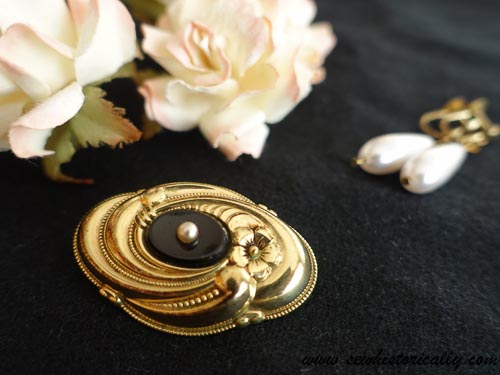
For morning wear: black molleton dress or wrapper worn with crape day cap; or black cashmere dress or wrapper with crape collar and cuffs, crape day cap and handkerchief with black border.
Street dress: black Thibet wool dress trimmed with two crape bands, crape bonnet with long crape veil, parasol trimmed with three wide crape rouleaux, black Thibet wool cloak trimmed with astrakhan, black Danish gloves, handkerchief with black embroidered border. Another street dress: black paramatta dress, skirt with 5 flounces, crape collar, undersleeves and day cap, black enamel jewelry, black cashmere shawl or paletot, black corded velvet bonnet trimmed with crape.
Afternoon gown: black barege dress trimmed with barege bows, handkerchief embroidered with black wool, velours royal bonnet trimmed with long feather, black kid gloves. Elegant afternoon gown: grenadine dress, skirt with 11 flounces, embroidered black tulle sleeves and collar. Tulle headdress and black enamel jewelry. (Frauen-Zeitung, 1861)
‘For deep mourning, nothing but black is worn, unless the wearer is a widow, when the bonnet-cap is of white tarletan, in the form known as widow’s cap. The collar and cuffs must be of plain black crape, and the only trimming allowable is black crape placed in folds upon the dress. Imperial serges, bombazine, delaine, barege, and merino are all suitable materials for the deepest mourning. The long shawl of black cashmere, or a square shawl of black barege, with a broad crape border, may be worn, if the street-suit is not made en suite, in which case a sacque of the same material as the dress, bound with crape, may be worn. The bonnet must be of plain black crape, and the veil of crape or barege. Black kid gloves, and in winter dark furs, may be worn in the deepest mourning. No ornaments, excepting those worn to fasten the collar, cuffs, or belt, are allowable, and those must be of jet.
For travelling-dresses in mourning, a heavy English serge is most serviceable, and it is allowable to wear a large linen cape, and a brown or green barege veil for the deepest mourning in travelling, since no dress is so disfigured by the dust of travel as close black.’ (The Art of Dressing Well, 1870, p. 93)
‘Deep mourning requires the heaviest black of serge, bombazine, lusterless alpaca, delaine, merino or similar heavily clinging material, with collar and cuffs of crape. Mourning garments should have little or no trimming; no flounces, ruffles of bows are allowable. If the dress is not made en suite, then a long or square shawl of barege or cashmere with crape border is worn. The bonnet is of black crape; a hat is inadmissible. The veil is of crape or barege with heavy border; black gloves and black-bordered handkerchief. In winter dark furs may be worn with the deepest mourning. Jewelry is strictly forbidden, and all pins, buckles, etc., must be of jet. […] The deepest mourning excludes kid gloves; they should be of cloth, silk or thread; and no jewelry is permitted during the first month of close mourning. Embroidery, jet trimmings, puffs, plaits – in fact, trimmings of any kind – is forbidden in deep mourning, but worn when it is lightened. Mourning handkerchiefs should be of very sheer fine linen, with a border of black, very wide for close mourning, narrower as the black is lightened.’ (Our Deportment., 1879, p. 337ff.)
Second Mourning
‘What is called “second mourning” is black silk, trimmed with crape. […] Complimentary mourning is black silk without crape.’ (Manners of modern society: being a book of etiquette, 1873, p. 84)
Second mourning: ‘black silk without any gloss, trimmed with crape […] delaine or bombazine, with a trimming of broad, plain ribbon, or a bias fold of silk.’ Silk bonnet trimmed with crape. Black net veil instead of the crape veil. (The Ladies’ Book of Etiquette, and Manual of Politeness : a complete Handbook for the Use of the Lady in polite Society, 1873, p. 32)
‘The next class of mourning is to substitute white linen collar and cuffs for those of black crape, a white facing for the bonnet, and a veil of net or tulle for the crape one, or a short crape veil for a long one. The bonnet may be trimmed with crape or black ribbon, but only a very slight trimming is appropriate. Jewelry of jet alone. Lustrous alpacas may be worn, trimmed with crape or folds of the same material.’ (The Art of Dressing Well, 1870, p. 93)
‘Lustreless alpaca and black silk trimmed with crape may be worn in second mourning, with white collars and cuffs. The crape veil is laid aside for net or tulle, but the jet jewelry is still retained. […] Mourning silks should be perfectly lusterless, and the ribbons worn without any gloss.’ (Our Deportment., 1879, p. 337ff.)
Half-Mourning
‘The third stage, which is called “half mourning,” is black and white.’ (Manners of modern society: being a book of etiquette, 1873, p. 84)
Half-mourning: ‘lead color, purple, lavender, and white […] the dress may be lightened gradually’: From a black silk dress with gray shawl and straw bonnet trimmed with black ribbon or crape flowers to a lavender dress with white bonnet and shawl (The Ladies’ Book of Etiquette, and Manual of Politeness : a complete Handbook for the Use of the Lady in polite Society, 1873, p. 32)
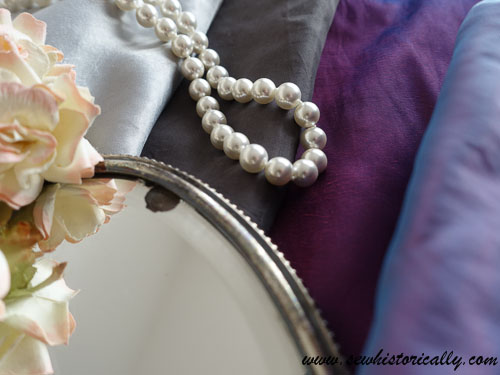
‘For the next stage of mourning, dresses are worn of black and white, or solid purple or solid gray, or of a combination of black, white and purple, or black, white and gray. A purple dress, however, is rather a light mourning. A bonnet of black silk trimmed with crape, of black straw, or Neapolitan, with ribbon and crape trimmings, are suitable, and a few crape flowers are also worn with this stage of mourning. Quillings and ruches of silk are worn with lustrous alpacas as trimmings. Half-mourning foulards are a most serviceable dress for light mourning, especially for morning-dresses. They can be handsomely made and trimmed for walking-suits, and if made for wrappers will wash well.
For a still lighter mourning, light grays and white with black trimmings may be worn, and in the bonnet different shades of lilac, white, and just a trifle of black. Black lace bonnets with white or violet flowers, are very elegant in this light mourning. The various mourning silks are now suitable, and crape is discarded for a trimming, lighter material being used. Lace or embroidered collars and cuffs, lace shawls and jet jewelry, relieved by setting of gold, is in perfectly good taste. This light mourning is usually a most elegant and universally becoming dress. It admits of as great variety in style and trimming as colors […] It is necessary, however, to remember that the frequent contact of black and white is often injurious to the latter’. (The Art of Dressing Well, 1870, p. 93f.)
‘A still less degree of mourning is indicated by black and white, purple and gray, or a combination of these colors. Crape is still retained in bonnet trimming, and crape flowers may be added. Light gray, white and black, and light shades of lilac, indicate a slight mourning. Black lace bonnet, with white or violet flowers, supercedes crape, and jet and gold jewelry is worn’. (Our Deportment., 1879, p. 337ff.)
Mourning Dress of a Gentleman
‘The mourning-dress usually worn by a gentleman is a full suit of black broad cloth, a crape band round the hat, of depth governed by the closeness of the black worn, and jet studs and cuff buttons. A widower wears a band the width of his hat, and this is the deepest mourning worn. The fashion, prevalent we know, of wearing only the crape hat-band for mourning, and the rest of the dress of the usual light or dark colors has the advantages only of convenience and economy, but is making a farce of mourning; it would be quite as appropriate for a lady to wear a suit of colored clothes with a heavy crape veil thrown over her bonnet. […] A straw hat is allowable in summer, with the crape band, and in lighter mourning gloves of dark gray or of lavender are suitable; studs of pearl set in jet, or jet bound with gold are also worn in lighter mourning dress, while the hat band is cut narrower as the rest of the dress is lightened.’ (The Art of Dressing Well, 1870, p. 145)
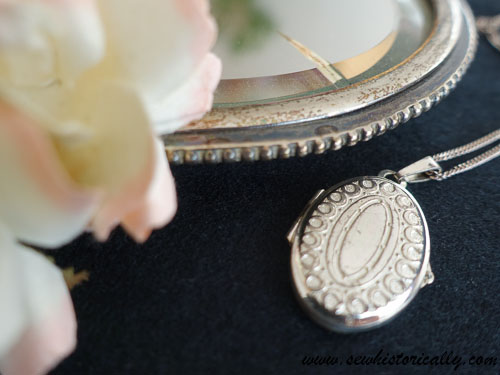
Mourning – a needless Expense?
‘The full dress mourning of a lady does not at first cost more than she would expend for any other suit; for it must be taken into consideration that she wears no laces, or expensive ornaments, and then she is not obliged to have a different display of trimmings, gloves, shoes, &c., every time she goes abroad, as she would do were she to dress in colors, and wear all the finishings of her attire “to match,” as is now […] thought indispensable. To the middling classes […] the custom of wearing mourning apparel is recommended as well by its economy as decency.’ (Ladies’ Magazine and Literary Gazette, 1831, p. 116f.)
‘Mourning has generally to be purchased hurriedly, and too often a dressmaker gets carte blanche almost to furnish the mourning. If such is the case, no wonder mourning is considered expensive; for things which are quite unnecessary, such as expensive crape in the place of rainproof kinds, more crape used than the degree of mourning requires, and many extravagancies of a like nature, naturally swell such a bill into one of large proportions, when by a little forethought the necessary black could have been purchased at a far more reasonable rate.’ (Collier’s Cyclopedia, 1901)
The Funeral
‘In a house where a death has taken place, the blinds are put down till the day after the funeral. […] A kind friend is sometimes deputed by the principal member of the family to give the necessary orders respecting the last duties to the departed. […] The funeral generally takes place eight days after the demise. In the meantime, friends and acquaintances send to inquire after the health of the family, but they do not expect to see any member of it.
According to modern etiquette, ladies do not attend funerals, the ceremonies being considered too mournfully exciting for their delicate organisation. But some members of the fair sex are determined to brave the excess of grief, in order to pay the last tribute to those they mourn. In the families of great landed proprietors, where the church is on the estate […] the female relatives, in some few instances, have been known to attend. Their costume for this sad occasion consists of black cloaks and black hoods – in fact, the same attire, adopted on a similar occasion, by the females of the operative classes and of our rural population, who seldom shrink from the sad task of following their loved ones to the grave.
Invitations to the funeral should be sent four days before it takes place. […] Funerals take place in the afternoon. […] For the funerals of children and unmarried persons, the hat-bands and gloves are white. White gloves, and a hat-band of a mixture of white and black, are worn for women who die in childbirth. For married people, and widows and widowers, the hat-bands and gloves are black.’ After the funeral ‘only those who are invited to be present at the reading of the will (which generally takes place after the funeral) return to the house of the bereaved. […] Monuments and grave-stones may be erected a month or a year after the funeral, according to the inclination and convenience of relatives.’ (The Hand-book of Etiquette, 1860, p. 64ff.)
‘If invited to the funeral of a person who is no relation to you, you should go entirely in black, with moderate hatband and black gloves. You should call and leave a card, to inquire after the bereaved family, a week after the funeral.’ (Etiquette for Ladies and Gentlemen, 1876, p. 117)
‘It is customary in cities to give the notice of death and announcement of a funeral through the daily newspapers, though sometimes when such announcements may not reach all friends in time, invitations to the funeral are sent to personal and family friends of the deceased. In villages where there is no daily paper, such invitations are often issued. […] It is a breach of good manners not to accept an invitation to a funeral, when one is sent.’ (Our Deportment, 1879, p. 296f.)
‘The bell knob or door handle is draped with black crape, with a black ribbon tied on, if the deceased is married or advanced in years, and with a white ribbon, if young or unmarried.’ ‘Upon entering the house of mourning, a gentleman should always remove his hat in the hall, and not replace it until he is about to depart.’ (Our Deportment., 1879, p. 298) ‘Ladies invited to funeral ceremonies should always wear a black dress, even if they are not in mourning; and it is bad taste to appear with a gay bonnet or shawl, as if for a festive occasion.’ (Our Deportment., 1879, p. 340)
Mourning and Society
Church
‘The Sunday after the funeral the relatives can, with perfect propriety, appear at church’ (The Hand-book of Etiquette, 1860, p. 67).
Cards
‘When in mourning, use paper and envelopes with a black edge. Never use the gilt edged, or fancy bordered paper; it looks vulgar, and is in bad taste.’ (The Ladies’ Book of Etiquette, and Manual of Politeness : a complete Handbook for the Use of the Lady in polite Society, 1873, p. 130)
‘Mourning cards are surmounted with a broad black margin; half mourning ones, with a black edge only.’ (Etiquette for Ladies, 1843, p. 39)
‘Mourning note-paper and black sealing-wax are used during a certain period after the funeral by all the relatives of the deceased; the deepest edges for a parent, wife, brother, or sister.’ (Take my Advice, 1872, p. 345)
‘When persons who have worn black are ready to resume their social life, they should leave cards with all their friends and acquaintances, either in person or by sending them through the mail.’ (Household Companion: Book Of Etiquette, 1909)
Victorian mourning envelopes with black edge. Painting with black-edged mourning letter.
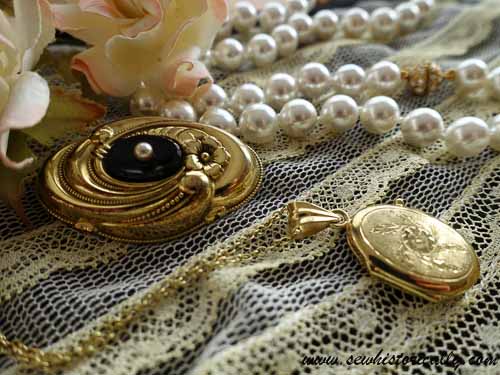
Visits
‘No person should make any visite de ceremonie during the period of grand deuil. Thus, a widow must abstain from such for a whole year from the time of the decease of her husband; neither should she during that time […] have a day in the week for receiving visits.’ (Littell’s Living Age, 1868, p. 185)
‘Visitors, in paying condoling visits, should be dressed in black, either silk or plain-coloured apparel.’ (The Book of Household Management, 1861, p. 11)
‘About a week after the funeral, friends call upon the bereaved family, and acquaintances call within a month. […] In making first calls of condolence, none but most intimate friends ask to see the family. […] Formal notes of condolence are no longer sent. Those who have known anything of the unsounded depths of sorrow do not attempt consolation. All that they attempt to do is to find words wherein to express their deep sympathy with the grief-stricken ones.’ (Our Deportment., 1879, p. 301)
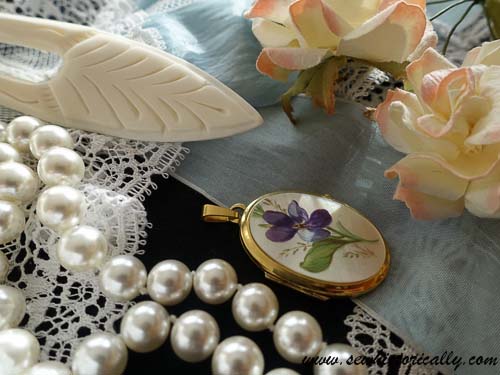
Marriage
‘Pure white is the only color worn by the young bride, and the full veil of lace, with weath of orange flowers […] but for a widow, pearl-color or tinted silk, without any veil or wreath, is better.’ (Frost’s Laws and By-Laws of American Society, 1869, p. 127)
‘If she remarries before the time of her mourning has expired – which she can do legally at the end of ten months from the date of the death of her husband – she may leave off her mourning for the day of the wedding, but must put it on again the day after; and her husband wears mourning with her. A widower, on the other hand, does not wear mourning for more than a year, and sometimes for not more than six month. Should he marry during his period of mourning, his wife must not wear during that period any other colour but white, gray, or violet.’ (Littell’s Living Age, 1868, p. 185)
‘The marriage ceremonials of a widow differ from that of a young lady in not wearing the veil and orange blossoms. She may be costumed in white and have her maids at the altar if she pleases. This liberty, however, has only been given her within a few years.’ (Our Deportment., 1879, p. 302)
‘A young lady who is wearing mourning may officiate as a bridesmaid in a dress of white trimmed with pale lavender, violet, or purple, worn over silk of the same shade, but black is never to be worn […] at a wedding or wedding-reption; persons in deepest mourning are allowed to wear lavender, white or gray, on these occasions, even if they resume close black immediately afterwards. […] A bride who is wearing mourning should wear violet, lavender or delicate shades of lilac for bridal calls, even if she is wearing closer mourning at other times.’ (The Art of Dressing Well, 1870, p. 73f.)
‘It is contrary to etiquette to wear mourning to a wedding. Even in the case of a widowed mother to either of the happy pair, it is customary to wear gray, or some neutral tint, upon the wedding day, even if the deepest mourning is resumed afterwards.’ (Frost’s Lawa and By-Laws of American Society, 1869, p. 127)
‘No one should attend in black or mourning dress, which should give place to grey or lavender.’ (Our Deportment., 1879, p. 336f.)
Dinner, Theater etc.
‘During the first period of mourning it is not considered becoming to visit places of amusement or to enter social life or indulge in gaiety of any kind. After a certain time elapses six months or a year, according to the depth of the mourning—a person is at liberty to go out quietly to concerts, theatres, informal dinners, etc. […] No invitations of any kind should be left at a house of mourning, until after a lapse of a month or more, according to circumstances. Then, cards to balls, weddings, and general entertainments may properly be sent.’ (Household Companion: Book Of Etiquette, 1909)
‘In the case of brothers, sisters, parents and grandparents, society would be given up for at least three months, if not more, and it would be very bad taste to go to a ball or large festive gathering in crape. Widows do not enter society for at least a year – that is, during the period of their deepest mourning.’ (Collier’s Cyclopedia, 1901)
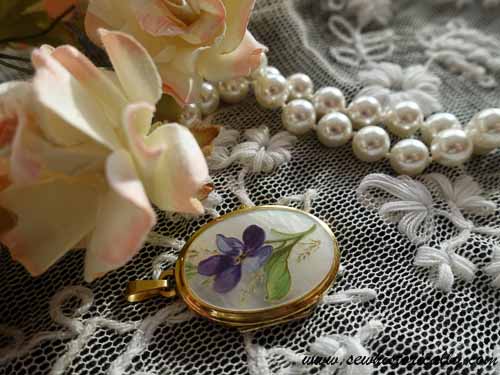
Ball
‘Either mourning or half-mourning is unbecoming in a ball-room, but scarlet flowers and trimmings are now tolerated. Some ladies prefer black dresses to any other. In such cases they can trim them with what colours they choose, but the etiquette of the ball-room requires that mourning black should be trimmed with scarlet.’ (The Etiquette of Fashionable Life , 1849, p. 17)
‘Even should you be in mourning, wear white gloves, not black. People in deep mourning have no business in a ball-room at all.’ (Etiquette: Or, A Guide to the Usages of Society, with a Glance at Bad Habits, 1843, p. 28)
‘Ladies in deep mourning should not dance, even if they permit themselves to attend a ball. Should they do so, black and scarlet or violet is the proper wear. Where the mourning is sufficiently slight for dancing to be seemly, white, with mauve, violet or black trimmings, flounces, etc., is proper. White gloves befit the ball-room; in mourning they may be sewn with black.’ (Household Companion, 1909)
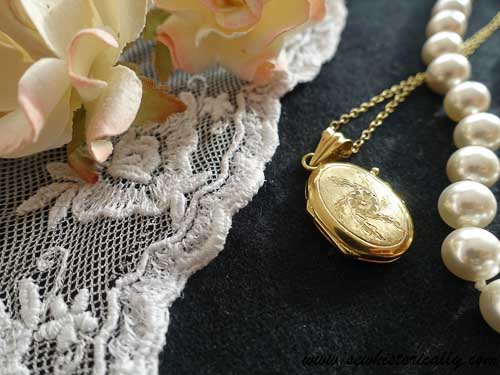
Mourning Fabric Dictionary
Barege
‘(Ba-Razh’). [So called from Bareges, a town in France, where it was first made] Barege veiling is woven with an extremely fine silk warp and a fluffy woolen weft, thirty inches wide. It is imported from France in several qualities’. (A Complete Dictionary of Dry Goods, 1892) 1850 Punch cartoon of a lady wearing a barege dress.
Bombazine
‘A well known stuff, produced by various mixtures of cotton and silk.’ (The Engineer’s And Mechanic’s Encyclopaedia, 1849) ‘[From bombycina, made of silk] Originally a dress fabric woven of silk and wool, made in England as early as the reign of Elizabeth; afterward a cloth made of silk alone, but always of one color. At present, a light twilled dress fabric of which the warp is silk and the filling worsted, giving it a changeable shiny appearance; formerly black but now made in various colors.’ (A Complete Dictionary of Dry Goods, 1892) Close-up of bombazine
Broadcloth
‘is a closely woven fabric, finished with a soft and glossy nap.’ (Home And School Sewing, 1901) A ‘wide woolen cloth, with satin or glossy finish on face, and a nap.’ (Text-Book On Domestic Art, 1911)
Cashmere
‘a plain, soft woolen cloth.’ (Text-Book On Domestic Art, 1911) A ‘soft, irregular, twilled material, with the twill only on the right side.’ (Home And School Sewing, 1901)
Cheviot
‘a kind of serge having a coarse twill frequently made of worsted and extremely serviceable.’ (Home And School Sewing, 1901) A ’twilled cotton or woolen with a rough nap.’ (Text-Book On Domestic Art, 1911)
Crape
‘made of raw silk, gummed, twisted on the mill, and woven without crossing. […] Crape is either crisped [more twisted] or smooth : the former is double, and expresses a deeper mourning; the latter single, and is worn in ordinary epics, or for more distant relations’ (Domestic Encyclopedia Or A Dictionary Of Facts, And Useful Knowledge, 1802) ‘The best and most economical crape for all wear is the rainproof crape, an improvement and development of the Albert crape, which is not brought to the greatest perfection of manufacture; it costs about half what ordinary crape does, to begin with, and is very much more durable; its imperviousness to weather being, of course its great feature. The best make of this is quite suitable for widows’ mourning. Its appearance equals that of much more expensive ordinary crape. We see no reason ourselves why, especially if economy be an object, the rainproof crape should not be worn for all degrees of mourning.’ (Collier’s Cyclopedia, 1901)
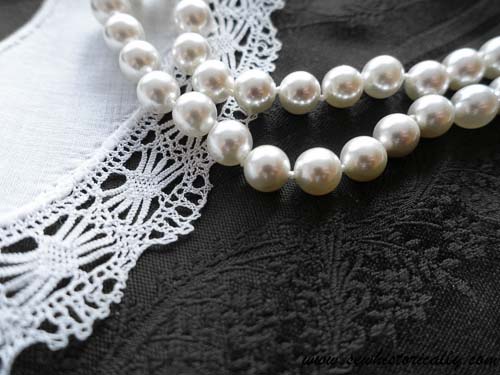
Etamine
‘an open-work effect resembling a wool grenadine.’ (Home And School Sewing, 1901)
Grenadine
‘is a thin, open material frequently made in meshes, checks, or plaids. It is manufactured of silk or wool; sometimes of the two combined. In purchasing these materials, it is very important to see that the warp and woof are even in strength and weight, otherwise they are liable to slip and become displaced in wear.’ (Home And School Sewing, 1901)
Henrietta cloth
‘a material with a silk warp and a wool filling; woven exactly like a cashmere.’ (Home And School Sewing, 1901) A ‘fine quality of worsted, woven cloth, with less luster than cashmere.’ (Text-Book On Domestic Art, 1911)
Merino
‘is a soft twilled fabric originally made from the wool of the merino sheep; it is heavier than cashmere and twilled on both sides. The number of twills to the inch in merino and other standard fabrics is often used to indicate their quality.’ (Home And School Sewing, 1901)
Nuns veiling
‘is a thin, woolen material which is very hard twisted in the thread, consequently very strong and capable of resisting wear.’ (Home And School Sewing, 1901) ‘A variety of wide untwilled woolen dress fabric, very soft, fine and thin; formerly used by nuns for veils, when it was more transparent; but now used exclusively for ladies’ summer dresses, dyed black, white and in colors.’ (A Complete Dictionary of Dry Goods, 1892)
Paramatta cloth
‘A twilled dress fabric made in imitation of bombazine, the weft of which is worsted and the warp cotton. It is usually employed for purposes of mourning.’ (A Complete Dictionary of Dry Goods, 1892)
Serge
‘is a compact, closely woven twilled material. It is one of the most serviceable of all woolen goods, principally because it cannot be easily affected by either dampness or dust.’ (Home And School Sewing, 1901)

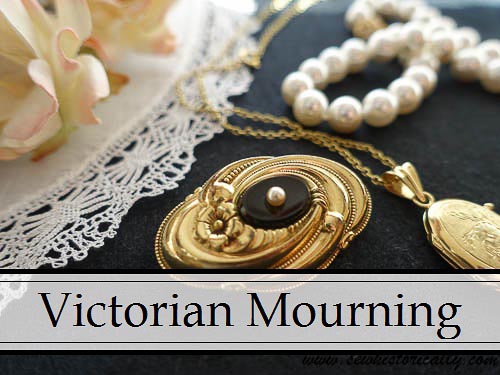
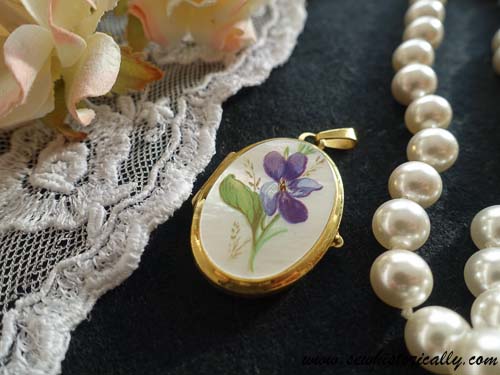

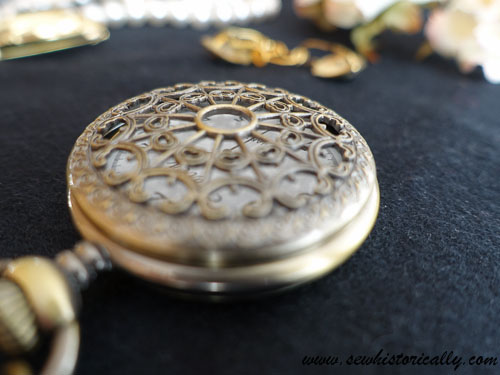
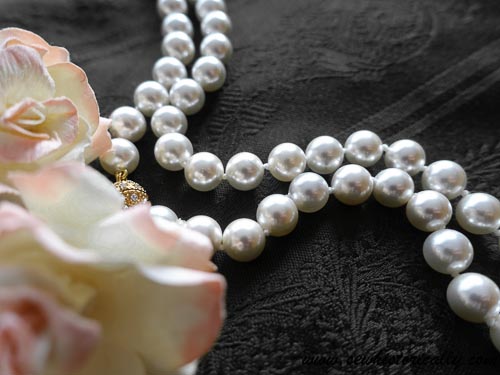

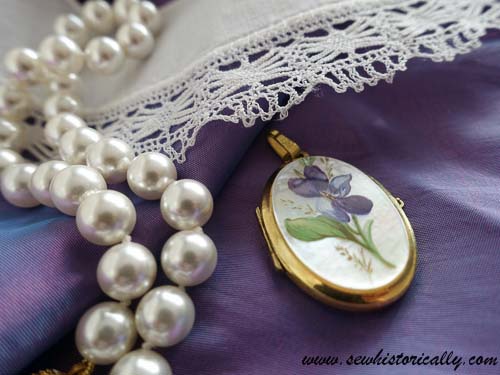
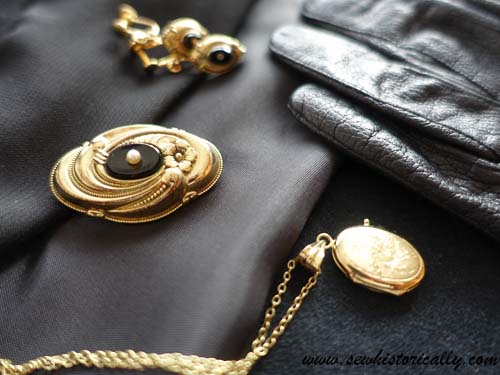
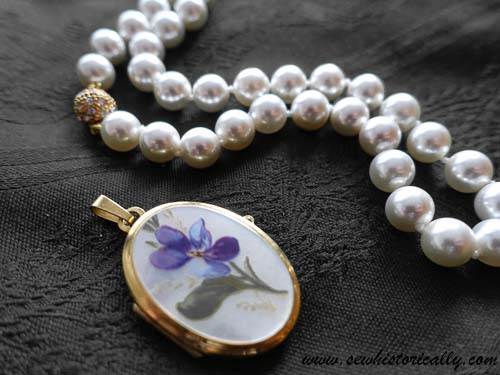
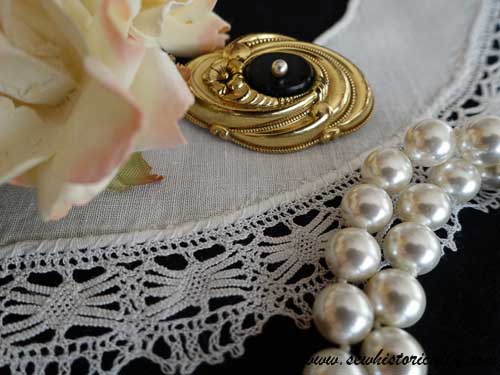
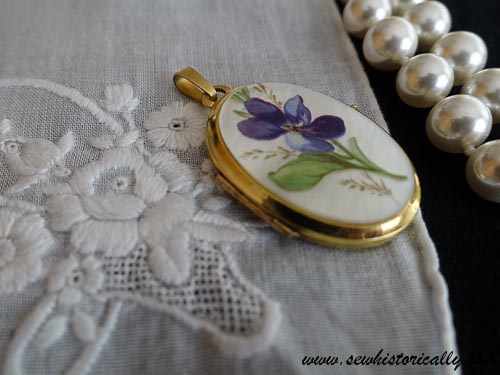
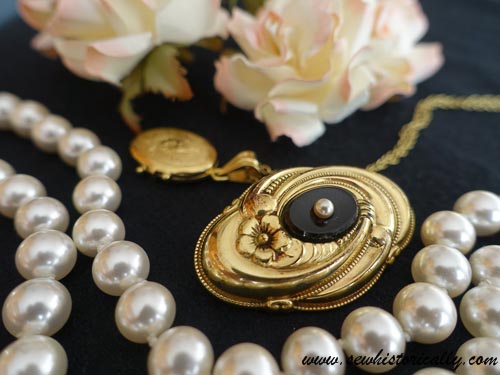
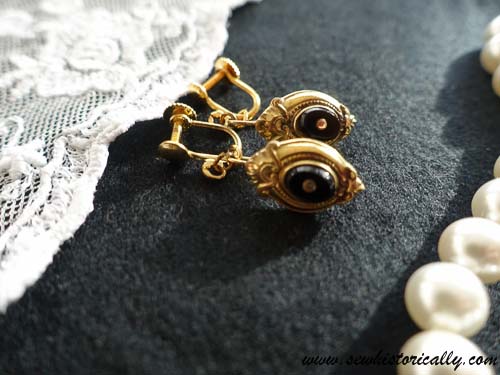
One thought on “Victorian Mourning”